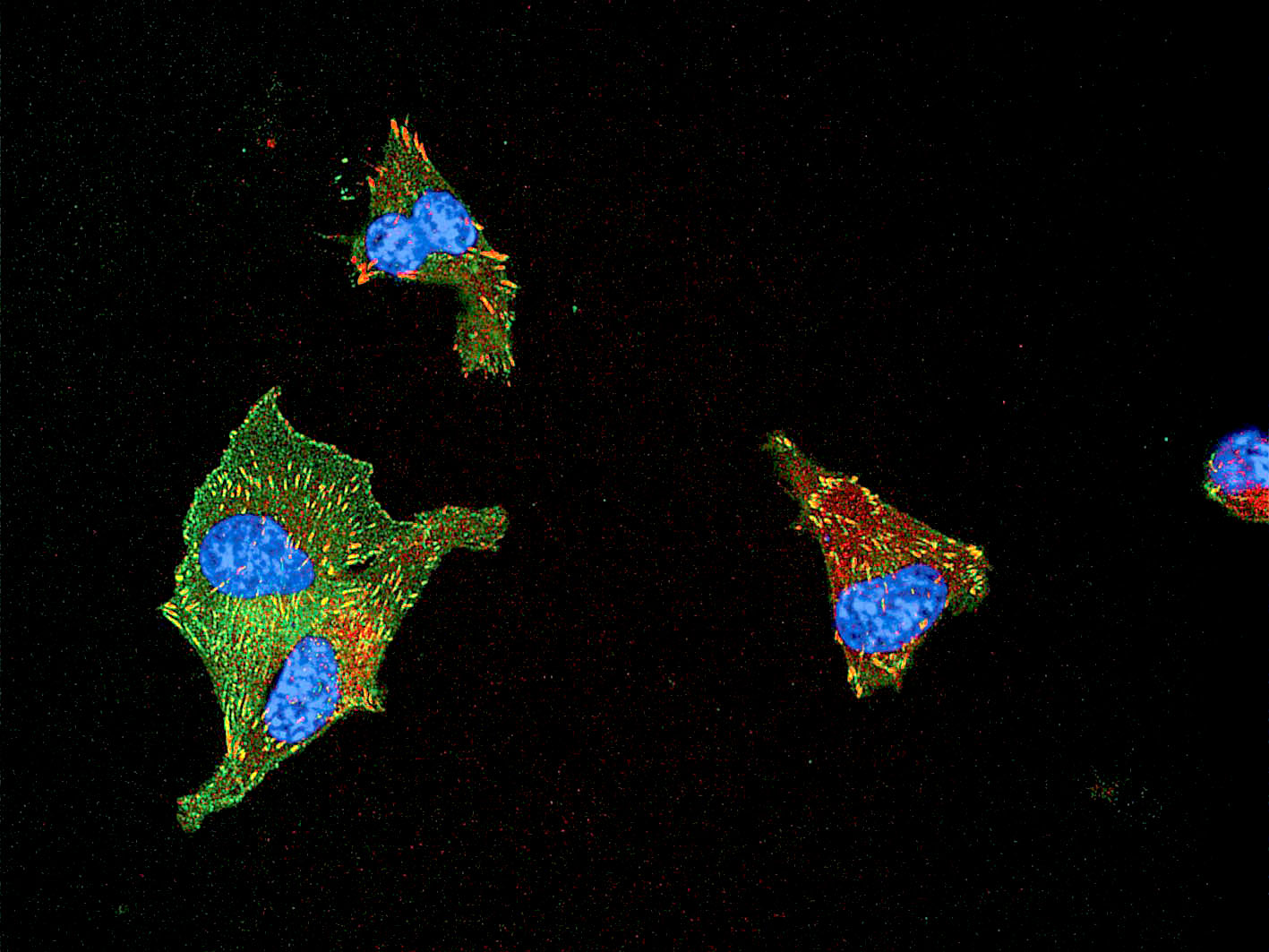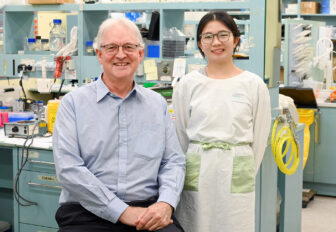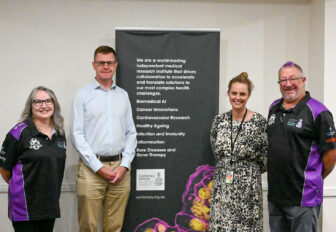Research recognised with journal cover

Aster Pijning, PhD candidate at the ACRF Centenary Cancer Research Centre, has had her science recognised with an image from her paper selected for the recent front cover of the prestigious journal ‘Blood’.
The paper provides new understanding of the molecular basis of thrombosis, blood clots that can block veins or arteries, potentially causing life threatening events such as heart attacks or stroke.
“We discovered that the protein αIIbβ3, which is expressed at a high level on platelets (cells that help blood clots form), is produced in different covalent forms (i.e. with different chemical bonds) that have different functions,” said Ms Pijning.
“This finding extends our knowledge of αIIbβ3 and has the potential to help researchers develop more effective anti-blood clotting drugs,” she said.
The cover image, taken by a confocal microscope, shows fibroblast cells that are made to express the newly discovered covalent form of the αIIbβ3 protein (shown in green). This mimics the activity of this form found on human platelets. Confocal images such as this one, as well as other experiments, were used to show the altered functionality of a different covalent form of αIIbβ3.
Publication Title: An alternate covalent form of platelet αIIbβ3 integrin that resides in focal adhesions and has altered function.
Authors: Aster E. Pijning; Mitchell T. Blyth; Michelle L. Coote; Freda Passam; Joyce Chiu; Philip J. Hogg.





